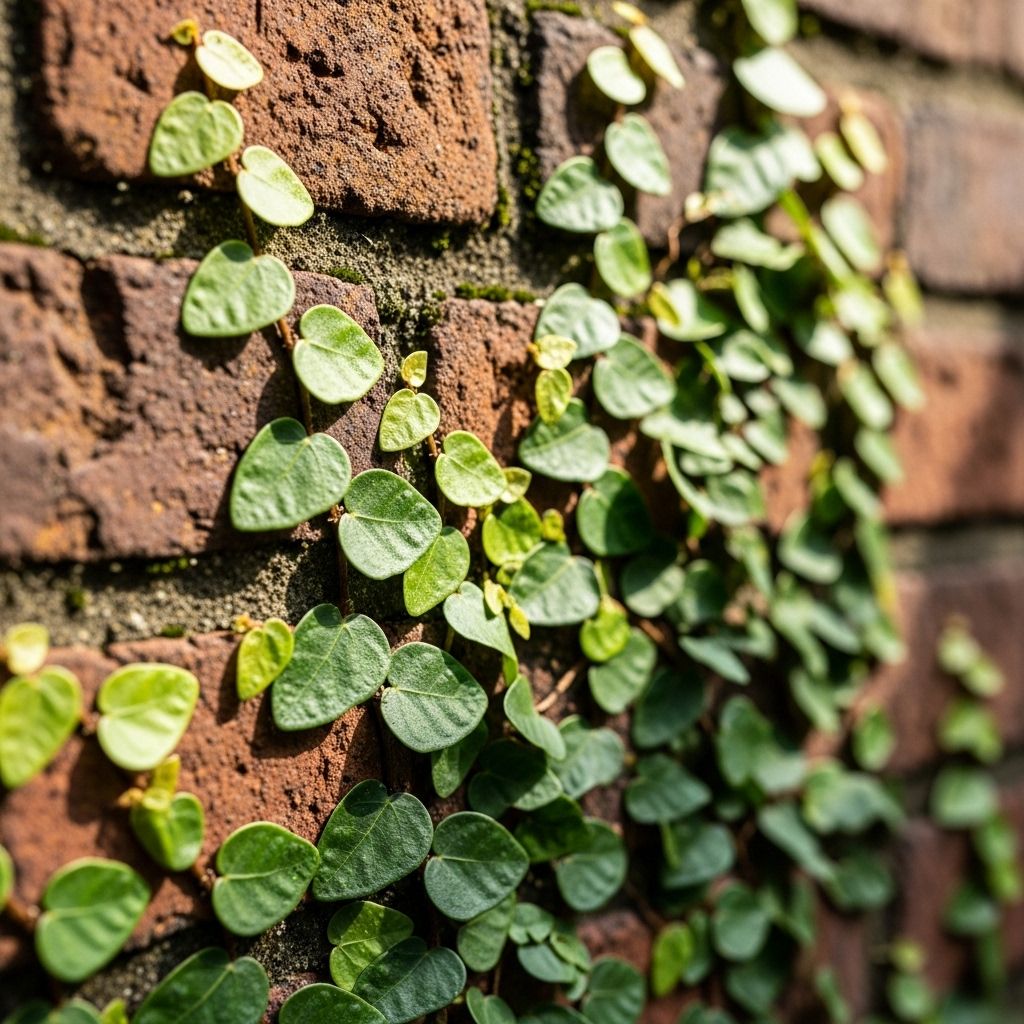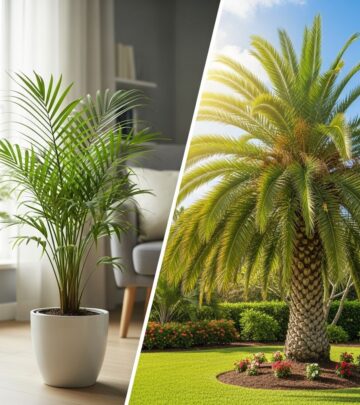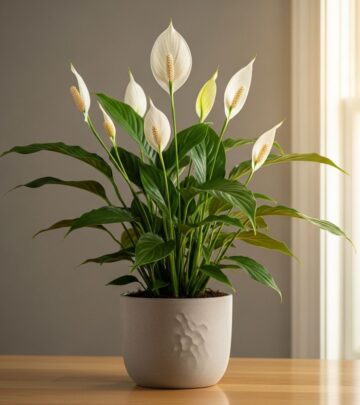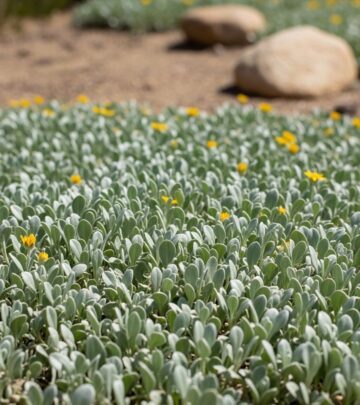Gardening 101: Creeping Fig Vine (Ficus pumila) – A Complete Plant Guide
An evergreen climber that cloaks surfaces in greenery while thriving with little upkeep.

Image: HearthJunction Design Team
Creeping Fig Vine (Ficus pumila): The Lush Climber for Every Garden
Creeping Fig (Ficus pumila) is a vigorous, evergreen vine loved for its ability to transform ordinary walls, fences, and garden structures into living tapestries of green. Native to East Asia, this fast-growing plant is renowned for both its visual impact and adaptability, making it a top choice among homeowners, landscapers, and plant enthusiasts seeking both beauty and durability for vertical spaces.
What is Creeping Fig?
The Creeping Fig Vine is a member of the versatile Ficus family and botanically identified as Ficus pumila. It’s a perennial, woody vine that thrives in USDA zones 8–11 and works as both a climber and a groundcover. Its ability to adhere to a variety of surfaces and cover large areas with minimal maintenance distinguishes it from other climbers.
Key Facts at a Glance
- Type: Woody perennial vine
- USDA Zones: 8–11
- Height: 20–30 feet (can be pruned to maintain lower)
- Spread: Up to 15 feet or more
- Sun Exposure: Full sun to partial shade
- Water: Light drinker once established; avoid overwatering
- Pruning: 2–3 times per year for neatness and health
- Foliage: Small, heart-shaped leaves; evergreen in mild climates
Spotlight: Visual Appeal and Growth Habits
Creeping Fig’s aesthetic lies in its dense mat of tiny, deep green leaves. In youth, foliage appears soft and delicate, but as the plant matures, the leaves thicken and the stems become woody, lending robustness to its lush curtain.
This vine attaches itself to surfaces using small adhesive roots, effortlessly climbing walls, trellises, and stone facades. When planted as groundcover, it spreads vigorously, forming a lush carpet of foliage over bare soil or uneven terrain.
Choosing the Perfect Spot
Selection of location is crucial for maximum performance. Creeping Fig flourishes in areas providing at least 4–6 hours of sunlight daily, though it tolerates partial or even dappled shade. The vine adapts well to various soil types as long as the soil drains efficiently, preventing root rot.
- Full sun will encourage compact, dense growth and richer leaf color.
- In partial shade, expect looser growth with slightly larger, brighter leaves.
- Protect from baking western exposures in the hottest climates to prevent leaf scorch.
Planting and Installation Guide
- Prepare the Site: Remove weeds and loosen soil, ensuring it is well-draining. Amending with compost improves structure and fertility.
- Plant Spacing: For wall coverage, space plants 3–5 feet apart. If using as groundcover, 2–3 feet apart accelerates coverage.
- Planting Depth: Plant at the same depth as in the nursery pot, firming the soil around the base.
- Initial Support: Young vines may need gentle guiding and support until they attach naturally. Use wires or trellises if establishing on hard surfaces like masonry or fences.
- Watering: Water deeply after planting, maintaining evenly moist soil until established. Thereafter, reduce to moderate watering.
Seasonal Care and Maintenance
Creeping Fig requires minimal care once established but benefits from routine attention:
- Watering: Once mature, the vine is drought-tolerant but appreciates deep watering during extended dry spells.
- Feeding: Apply balanced, slow-release fertilizer in spring to encourage growth.
- Mulching: Organic mulch around the base helps retain moisture and suppress weeds.
- Pruning: Prune 2–3 times a year to control size, remove deadwood, and keep the foliage flat and neat. Overlapping, leathery leaves can be thinned to improve air circulation.
Design Uses: Vertical and Ground Appeal
Creeping Fig’s versatility makes it ideal for creative garden applications:
| Application | Benefits |
|---|---|
| Wall Cover | Creates a seamless green facade, concealing unattractive surfaces and adding instant charm. |
| Fences and Trellises | Lends a soft, living barrier that adds privacy and softens hard lines. |
| Groundcover | Fills gaps, prevents erosion, and shades out weeds on slopes and under trees. |
| Topiary and Forms | Can be trained over frames to create sculptures or living furniture. |
- Perfect for compact areas where space precludes shrubs or hedges.
- Mix with other climbers or flowering vines for layered visual impact.
- Use as a vertical accent in modern landscapes for a dramatic effect.
Common Challenges and Troubleshooting
Though generally robust, Creeping Fig can experience some issues:
- Leaf Yellowing: May signal overwatering, sun scorch, or nutrient deficiencies. Leaves typically do not change color with autumn, so persistent discoloration requires checking conditions and adjusting care.
- Invasive Growth: Unchecked, the vine can overtake structures and invade unintended areas. Regular pruning is essential to maintain control.
- Damage to Structures: Adhesive rootlets can etch into wood, mortar, or masonry; regular trimming prevents long-term damage and keeps growth manageable.
- Pests and Diseases: Generally pest-resistant, but may occasionally attract spider mites or scale—these can usually be managed with horticultural oil or insecticidal soap.
Pro Tips for Best Results
- Install horizontal wires or trellises 12 inches apart on masonry to encourage even vertical growth and assist with wall coverage.
- Direct vines sideways early in their development to accelerate horizontal coverage for fences and wide surfaces.
- In cooler zones, grown as an annual or houseplant. Protect in pots or remove to shelter during winter below USDA zone 8.
Creative Inspiration: How to Use Creeping Fig in Design
- Urban Oasis: Turn bland city walls or garage exteriors into lush, green sanctuaries.
- Living Room for Wildlife: Dense foliage provides habitat and shelter for beneficial insects and birds.
- Contained Accents: Prune into box-shaped or framed accents to highlight structural elements in the landscape.
- Green Backdrops: Pair with brightly colored perennials for striking contrasts.
Comparison Table: Creeping Fig vs. Other Common Vines
| Feature | Creeping Fig (Ficus pumila) | Ivy (Hedera spp.) | Star Jasmine (Trachelospermum) |
|---|---|---|---|
| Growth Rate | Fast | Medium-Fast | Medium |
| Evergreen? | Yes | Most species | Yes |
| Surface Adherence | Adhesive rootlets | Aerial roots | Twining stems |
| Flowering | Inconspicuous | Rarely | Fragrant white flowers |
| Tolerance to Pruning | Excellent | Good | Good |
Frequently Asked Questions (FAQs)
Q: How quickly does Creeping Fig spread?
A: When given the right conditions (warmth, moisture, support), Creeping Fig can cover 2–3 feet per year or more. Growth accelerates considerably after the first year of establishment.
Q: Will it harm brick or stucco walls?
A: Over time, the vine’s adhesive rootlets may leave marks or cause minor damage to porous surfaces, especially if allowed to thicken unchecked. Regular supervised pruning helps prevent structural issues.
Q: How often should I prune Creeping Fig?
A: Prune at least 2–3 times per year during the growing season. More frequent light trims can help encourage containment and promote denser, healthier growth.
Q: Can Creeping Fig grow indoors?
A: Yes, it can be grown as a trailing or climbing houseplant with bright, indirect light and regular watering, but it does best outdoors in suitable climates.
Q: Why are my Creeping Fig’s leaves turning yellow?
A: Yellowing may indicate overwatering, sunburn, or nutrient stress—adjust environmental factors and check for pests or disease if the problem persists.
Q: How close should I plant Creeping Fig vines?
A: For tight, quick coverage, space plants 3–5 feet apart along walls or fences; as groundcover, space 2–3 feet apart. In large areas, direct stems sideways to increase horizontal coverage.
Q: Is Creeping Fig invasive?
A: In ideal conditions, it can be aggressive and spread beyond intended borders. Prune regularly and install physical barriers to limit unwanted expansion.
Summary
Creeping Fig Vine (Ficus pumila) remains a beloved garden asset, offering fast, evergreen coverage for any structure or space. With informed placement, routine care, and creative design, it’s possible to transform unsightly features into green masterpieces while minimizing maintenance and maximizing curb appeal.
References
- https://threetimbersshop.com/products/creeping-fig-vine
- https://www.gardenista.com/garden-design-101/vines/creeping-fig-ficus-pumila/
- https://questions.gardeningknowhow.com/tag/creeping-fig/
- https://www.pinterest.com/pin/creeping-fig-a-field-guide-to-planting-care-and-design–268456827778649532/
- https://www.gardenista.com/garden-design-101/vines/
Read full bio of Shinta












